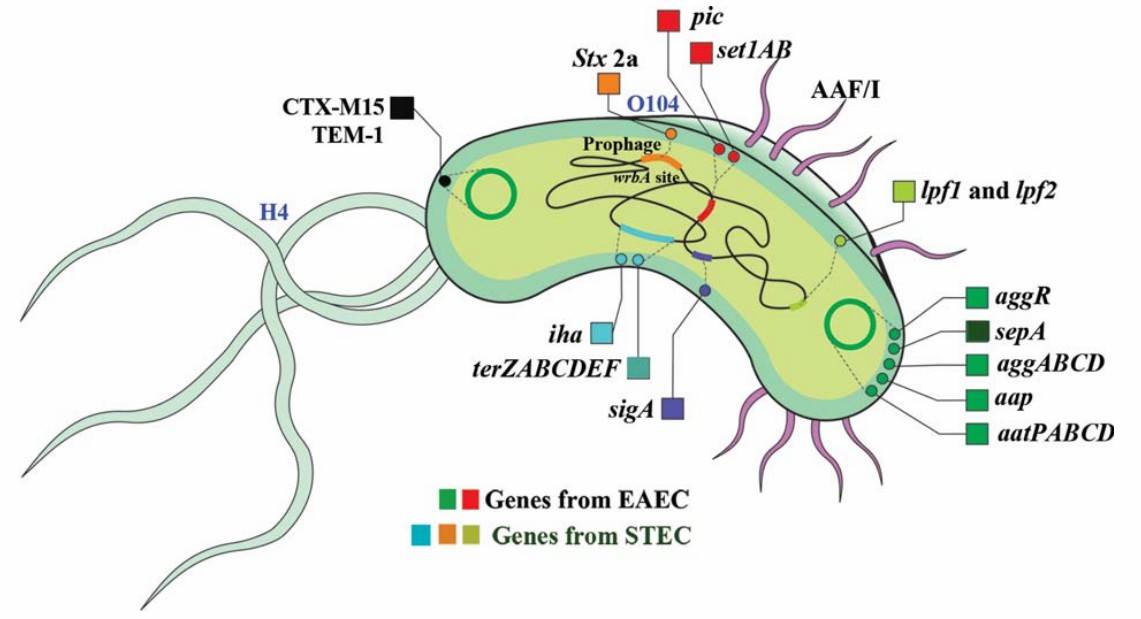EHEC is closely linked to a variety of diseases that occur in children, such as diarrhea, fever, bloody diarrhea and hemolytic uremic syndrome (HUS). Humans have been shown to be a reservoir of EHEC O104:H4. Sprouted seeds as well as contaminated vegetables are vital means of spreading the strain. In general, patients infected with EHEC O104:H4 develop symptoms after an incubation period of 8 days. Fortunately, EHEC-associated diseases are self-limiting and most patients resolve spontaneously. A lot of data showed that the proportion of HUS cases was higher than the HUS rate in other strains outbreaks, revealing that EHEC O104:H4 is abnormally virulent.
 Fig.1 E. coli O104:H4 outbreak. Distributed under CC BY-SA 3.0, from Wiki.
Fig.1 E. coli O104:H4 outbreak. Distributed under CC BY-SA 3.0, from Wiki.
Pathogenic Mechanism
Animal experiments play a crucial role in the study of the pathogenesis of EHEC O104:H4 in vivo. Infection of germ-free mice with a specific bacterial strain induced the occurrence of acute tubular necrosis (ATN). This kidney damage is primarily attributed to the production of Shiga toxin 2 (Stx2). Furthermore, another study of this strain and an Stx-negative variant revealed that the 2011 outbreak strain caused weight loss and death in ampicillin-treated mice and that Stx2 was a key virulence factor responsible for the observed pathogenesis. Notably, similar observations were made in two rabbit models, showing a potential link between Stx2 production by EHEC O104:H4 and disease progression.
Treatment
In general, antibiotic therapy is not indicated for EHEC infection because of no benefit or even harm, especially in patients who received antibiotic therapy at the initial stage of diarrhea. A possible mechanism for antibiotics to increase the risk of HUS development in patients is that antibiotics increase Stx production and release. However, different classes of antibiotics have different effects on Stx production in vitro, and the effects are also closely related to the concentration of antibiotics and the nature of EHEC strains.
Antibodies at Creative Biolabs
Creative Biolabs is a world-leading CRO and recognized antibody product supplier. More than 10 years of market experience and validated analytical methods ensure cost-effective anti-EHEC O104:H4 antibody products for customers in the life science industry. Our antibody products undergo a sophisticated and rigorous testing process to ensure purity and quality. Our antibodies have proven useful in a variety of research areas, including western blotting (WB), immunohistochemistry (IHC), enzyme-linked immunosorbent assay (ELISA) and immunofluorescence (IF). If you need to add a suitable fluorophore conjugate to your antibody, our experienced scientists will customize a reasonable solution for you. If you are interested in our anti-EHEC O104:H4 antibody products, please contact us for more information and a detailed quotation.
Click the followings link to view our products.